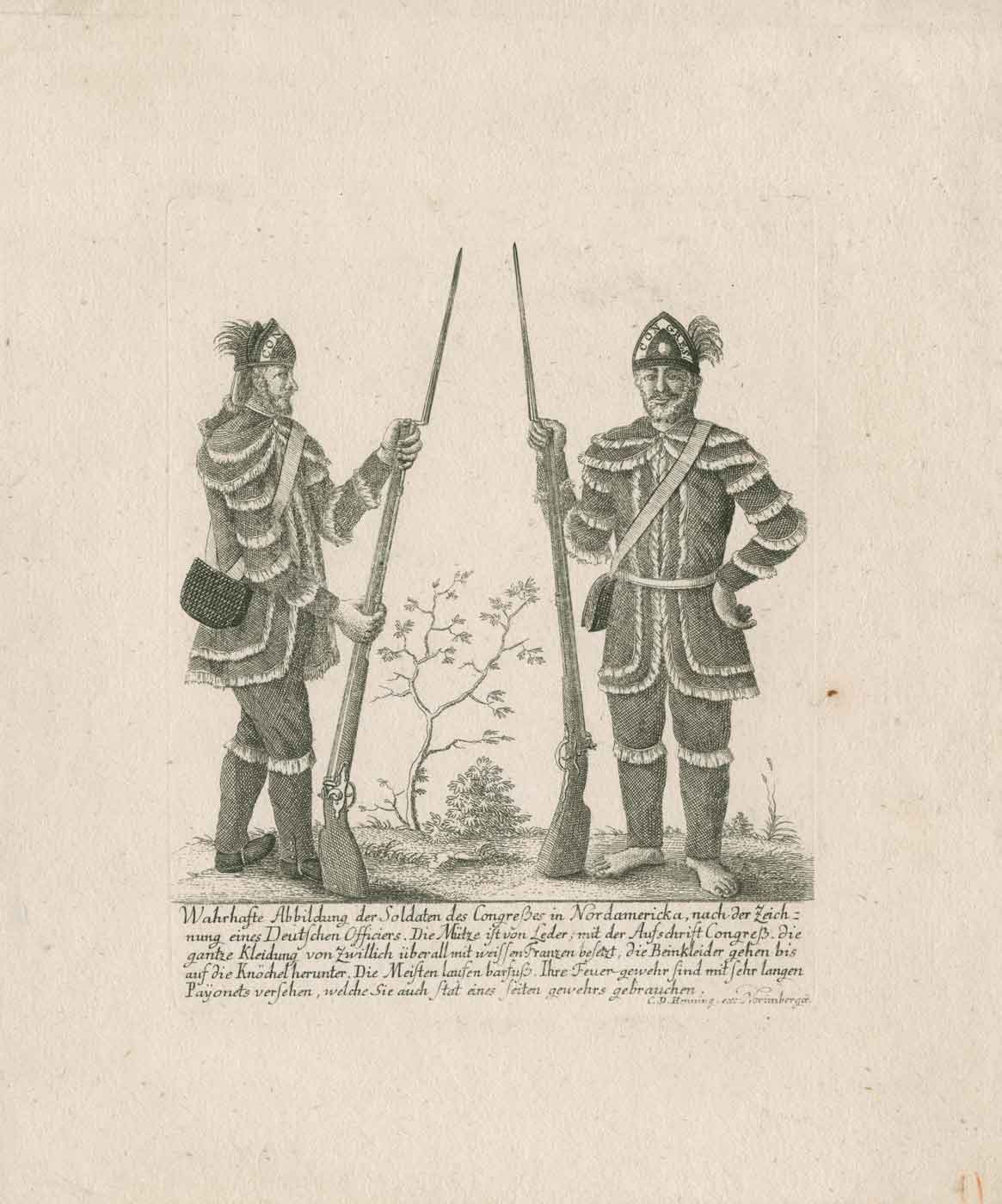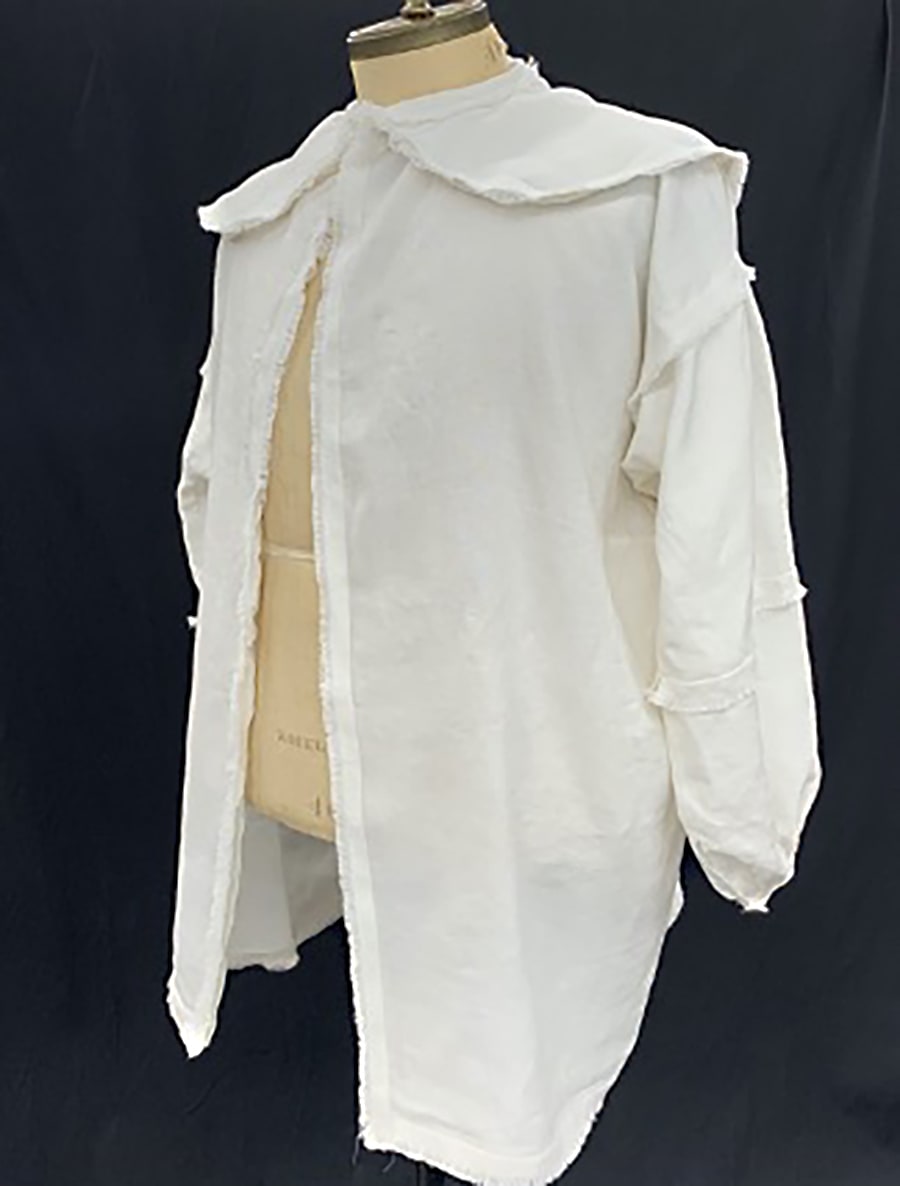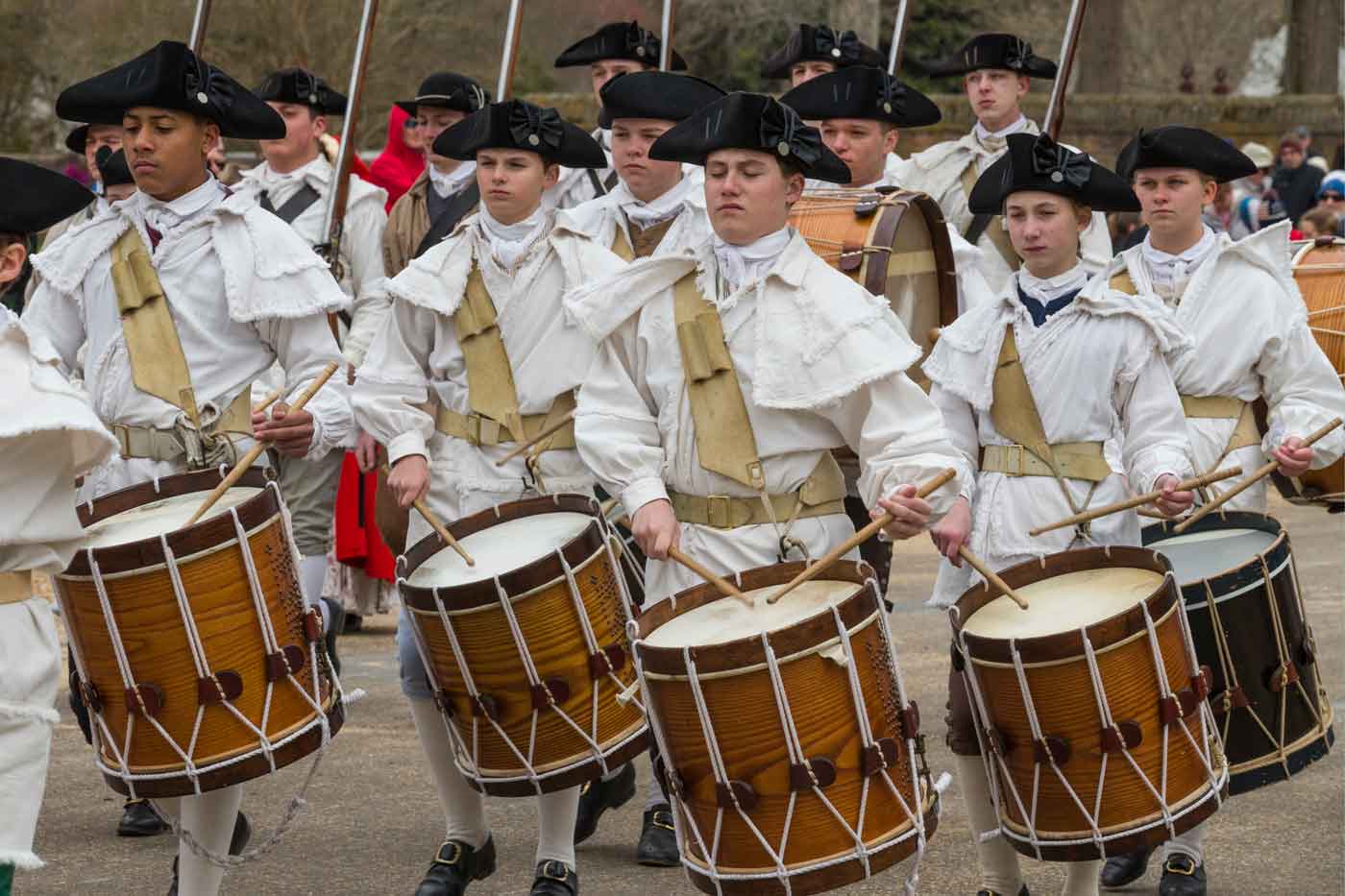“. . . ornamented with a great many fringes”
For many, the sight and sound of the Fifes and Drums marching down the Duke of Gloucester Street is iconic to Colonial Williamsburg. Sadly, this has not happened in over a year due to the COVID-19 pandemic. While the senior and junior corps are not marching, behind the scenes our curators and historians have been working to develop a more accurate uniform for the junior corps.
For over a decade, I have had a passion — some would call it an obsession — with the garment known as a hunting shirt. Developed sometime during the mid-18th century in the southern back country of the American colonies and worn often by hunters, the garment can be argued as one of the first true American fashions. Hunting shirts were simplistically made from squares and rectangles, just like their body shirt counterparts, but with the addition of a cape around the neck, being completely split open down the front, and trimmed with fringe on all of its edges.

At the outbreak of the American Revolution, colonies needed to immediately start clothing their troops. George Washington, who took command of the Continental Army in July of 1775, quickly understood the situation and adopted the hunting shirt as the uniform for the army. As New Englanders did not know what a hunting shirt looked like, Washington sent patterns to several governors in hopes of quick manufacture and stated, “It is designed as a Species of Uniform—both cheap & convenient.” Washington would later write, “No Dress can be had cheaper, nor more convenient, as the Wearer may be cool in warm weather, and warm in cool weather by putting on under-Cloaths which will not change the outward dress, Winter or Summer—Besides which it is a dress justly supposed to carry no small terror to the enemy, who think every such person a complete marksman.” As the war progressed, the Continental Army procured and produced harder wearing traditional woolen uniforms, but the hunting shirt remained in service the entire war.
If possible, the clothing worn by our interpreters is based on antiques from our collection at Colonial Williamsburg or other collections across the globe. We wanted to ground our reproduction hunting shirt in an extant primary source. Of the tens of thousands of hunting shirts produced during the 18th century for civilians and Continental Army soldiers, only four survive to date. The four extant objects guided the development of the new pattern that will go into production at the Costume Design Center.

The new hunting shirts will differ only slightly from the existing uniforms. The capes will be slightly shorter with a small band collar around the neck and much less fringe, now only bordering the edges of the shirt, around the sleeves and cape. The biggest difference lies in the patterning. Of the four surviving hunting shirts, two show a unique method of pattering that did not use side seams. The body simply folds to meet in the center to create the opening, and cuts are made on the folds along the side of the body to create slits for the sleeves. While a small change, this construction method will save time for the Costume Design Center when making hundreds of hunting shirts for the junior corps.
Research and the reexamination of primary sources takes places constantly at Colonial Williamsburg to provide our guests with the most accurate information and appearance even in the most subtle of places. As Washington wrote over 200 years ago, these new shirts will continue to keep our junior corps members cool in the summer, warm with plenty of long underwear underneath in the winter, and uniform in appearance no matter the season. It won’t be long until the Fifes and Drums of Colonial Williamsburg march down the Duke of Gloucester Street once again, and we hope that you will be able to join us to enjoy their music and see the junior corps in their new uniforms.
Neal Hurst is the Associate Curator of Costume and Textiles. He spent seven years in the Historic Area earning his journeyman papers as a tailor and holds his BA from the College of William and Mary and his MA from the Winterthur Program in American Material Culture.
Further Reading
Neal Hurst, “kind of armour, being peculiar to America: The American Hunting Shirt,” (master’s thesis, The College of William and Mary, 2013). https://scholarworks.wm.edu/cgi/viewcontent.cgi?article=1581&context=honorstheses
Neal Hurst, “Fringe on American Hunting Shirts, ca. 1775–1815,” Military Collector and Historian, vol. 62, no. 3 (Fall 2010): 213–215.
Neal Hurst, “Addendum: Fringe on American Hunting Shirts, ca. 1775–1815,” Military Collector and Historian, vol. 63, no. 2 (Summer 2011): 103.
Colonial Williamsburg is the largest living history museum in the world. Witness history brought to life on the charming streets of the colonial capital and explore our newly expanded and updated Art Museums of Colonial Williamsburg, featuring the nation’s premier folk art collection, plus the best in British and American fine and decorative arts from 1670–1840. Check out sales and special offers and our Official Colonial Williamsburg Hotels to plan your visit.
